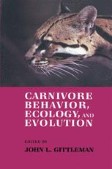Search
Search Results
-
In situ heart rate and activity of incubating Adélie penguins (Pygoscelis adeliae)
Heart rates and activity were monitored over 24 h in unrestrained, incubating Adélie penguins ( Pygoscelis adeliae ) exposed to natural conditions in...
-
Metabolism and Body Temperature during Circadian Sleep and Torpor in the Fed and Fasting Pigeon
Shallow torpor is utilized by many small-to-medium sized birds and mammals to extend their limited energy reserves by minimizing energy expenditure...
-
Importance of monogamous male birds in determining reproductive success
Several recent studies have questioned whether the presence and activities of monogamous male birds are of value to their young during the nesting...
-
Energy Saving during Breeding and Molt in Birds
Success of birds in breeding and molt obviously implies adequate availability in either food or body fuel reserves. However, due to conflicting...
-
City Centres
City centres provide a challenging habitat for wildlife as, in addition to severe environmental restraints, nearly every animal is regarded as a pest...
-
Energy Saving in Incubating Eiders
During the last decade many estimates have been made of the energy cost during incubation in free living birds. The two methods most often used to...
-
Annual cycle of energy and time expenditure in a golden-mantled ground squirrel population
We have analyzed seasonal shifts of energy and time allocation in a population of golden-mantled ground squirrels ( Spermophilus saturatus ) by...
-
Characteristics of the Urban Flora and Fauna
This chapter and the next two examine how ecological relationships in urban areas differ from those in the surrounding countryside. Most accounts...
-
Factors promoting polygyny in European birds of prey—a hypothesis
Polygyny is known in at least nine (out of 36) European raptor (Accipitriformes and Falconiformes) and seven (out of 13) owl (Strigiformes) species...
-
Industrial Areas
It is difficult to do justice to the mosaic of habitats centred on industrial areas; this is partly due to restrictions over access which has...
-
Impacts of Non-Domesticated Vertebrates on California Grasslands
The potential importance of animals in structuring natural communities has been explicitly recognized at least as far back as Darwin (1890), who...
-
The Advantages and Disadvantages of Small Size to Weasels, Mustela Species
The weasels (Mustela spp.) are a group of small mustelid carnivores that originated in the late Pliocene and are now distributed throughout the...
-
Clutch size and the cost of incubation in the Bengalese finch (Lonchura striata var. domestica)
By measuring daily intake of food, we compared the cost of incubation for small and large clutches in adult Bengalese finches ( Lonchura striata var. domestica...
-
Vertebrates of the jarrah forest
Vertebrates fulfil a number of important roles in maintaining the ecological balance of forest ecosystems. They serve as pollinators, predators,...
-
Urban Commons
Ecologically one of the most significant recent events in towns has been the expansion of wasteland. These newly created areas principally occupy...
-
Co-occurrence patterns of cavity-nesting birds in cottonwood-willow communities
We studied the covariation of six species of cavity-nesting birds to determine the extent to which species' co-occurrence patterns were attributable...
-
Dietary shifts, niche relationships and reproductive output of coexisting Kestrels and Long-eared Owls
Food samples of breeding Kestrels ( Falco tinnunculus ) and Long-eared Owls ( Asio otus ) were collected in the peak and low phase of their preferred...
-
Group-living in cliff swallows as an advantage in avoiding predators
Cliff swallows ( Hirundo pyrrhonota ) in SW Nebraska, USA, nest in colonies and associate in groups away from their colonies. The degree to which...
-
Brain temperature in the calliope hummingbird (Stellula calliope): a species lacking arete mirabile ophthalmicum
1. Hypothalamic and colonic temperature were simultaneously measured in the calliope hummingbird ( Stellula calliope ). The vascular anatomy of the...
